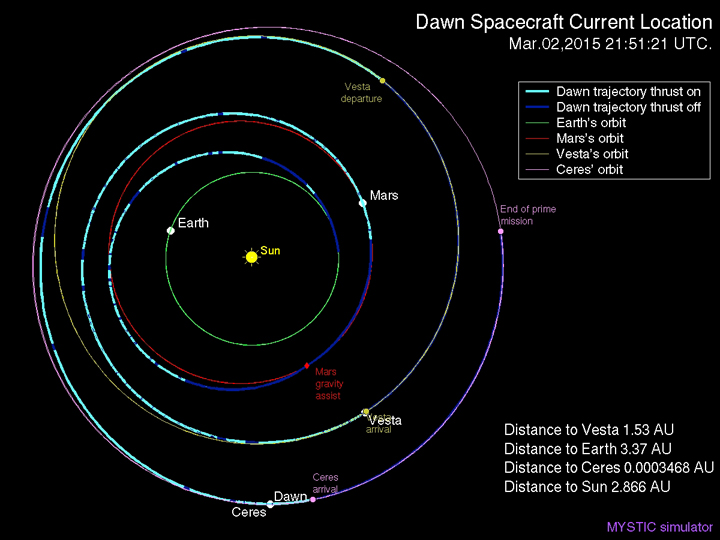TORONTO – Scientists are eagerly anticipating Friday’s arrival of NASA’s Dawn spacecraft around the largest object in our asteroid belt, Ceres.

“Dawn is about to make history,” said Robert Mase, project manager for the Dawn mission at NASA’s Jet Propulsion Laboratory (JPL).
READ MORE: Second bright spot seen on dwarf planet Ceres
Our asteroid belt consists of chunks of rocky debris left over from the formation of our solar system. So, in a way, it’s like an archaeological expedition — a look back in time. While Dawn won’t be digging, it will be using its scientific instruments to better understand how not only our solar system formed, but how our planet formed.
This isn’t Dawn’s first expedition — it orbited the asteroid Vesta for over a year in 2011 and 2012.
“These two bodies are like fossils from the dawn of the solar system, and they shed light on its origins,” said Carol Raymond, deputy project scientist at JPL.
The two targets are very different. Not only is Ceres larger than Vesta (Ceres has an average diameter of 950 km, while Vesta’s is 525 km), but they formed at different times.
Vesta formed earlier than Ceres and is dry. It’s believed that Ceres has about 25 per cent water. It is possible that water from bodies similar to Ceres helped provide water here on Earth.
READ MORE: NASA’s New Horizon spacecraft releases new images of Pluto
“Studying Ceres allows us to do historical research in space, opening a window into the earliest chapter in the history of our solar system,” said Jim Green, director of NASA’s Planetary Science Division at the agency’s Headquarters in Washington.
Already Dawn has sent back images that have intrigued scientists, particularly the appearance of several bright spots on the rocky world, something that may suggest the planet is experiencing geological activity.
Dawn is about 40,000 kilometres from Ceres. It will insert itself into orbit on Friday.



Comments